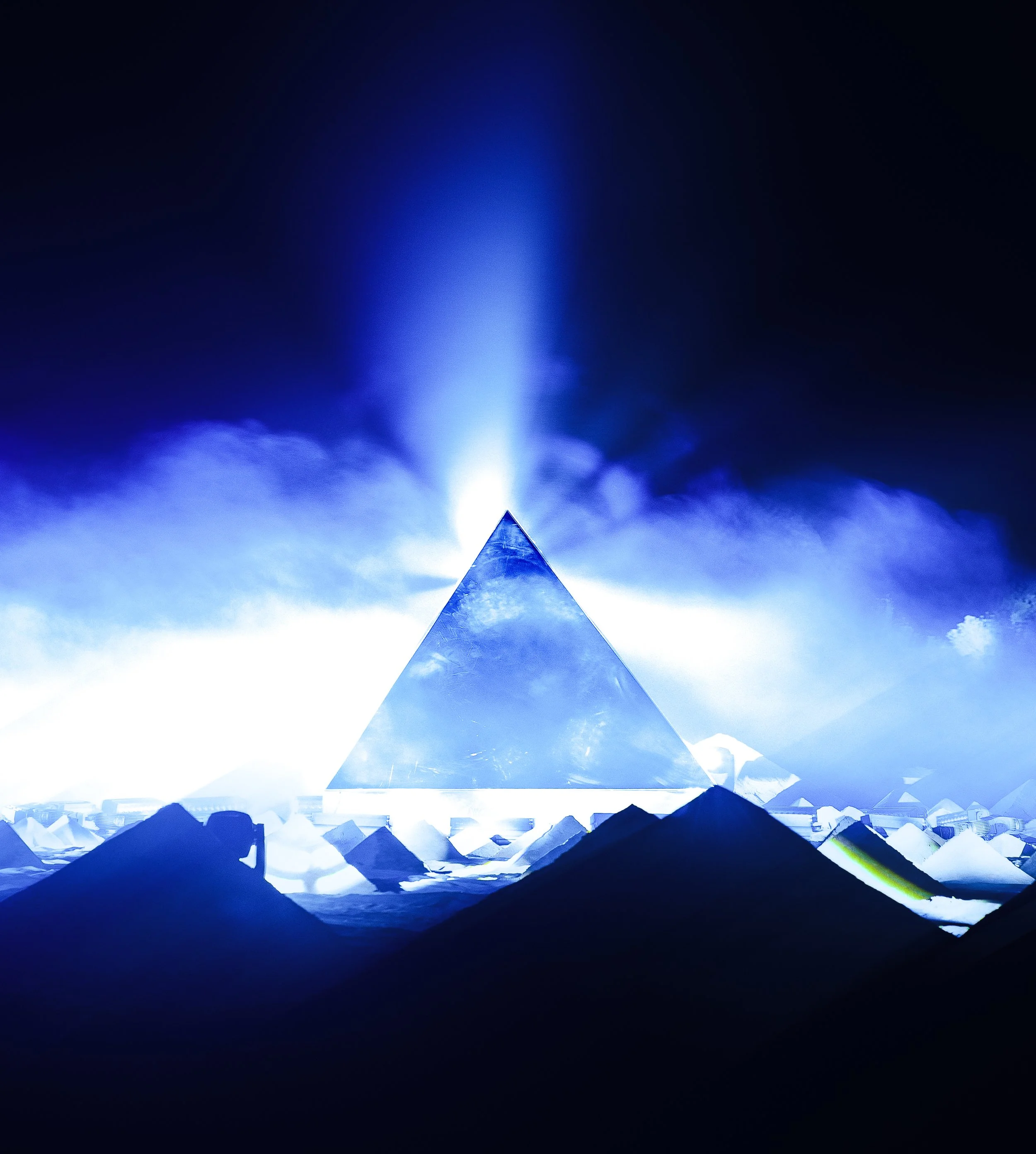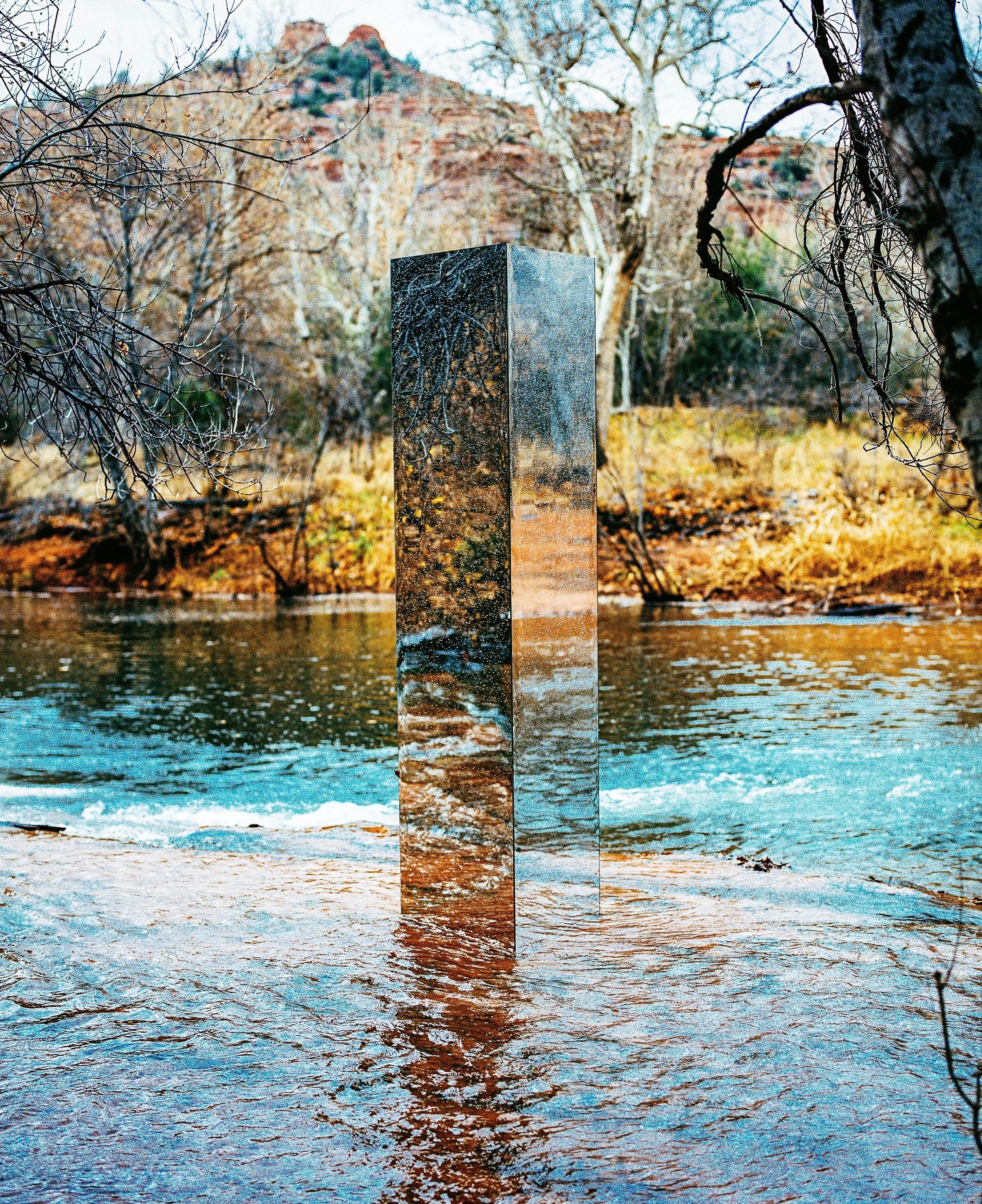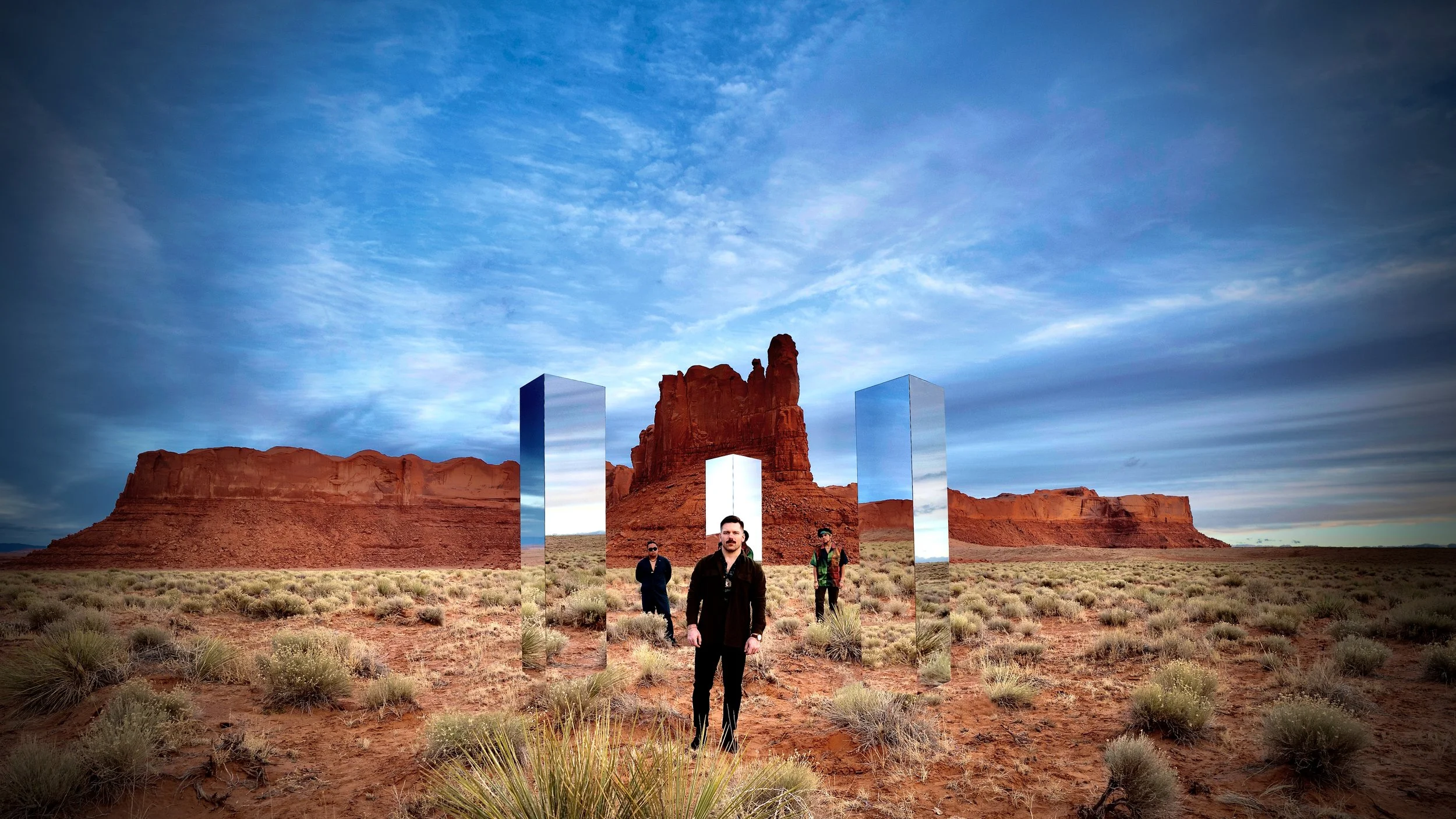A R I Z O N A - Moving On (Director's Cut)
A beacon of hope through music and visual storytelling
Directed by Owen Brown
Join us for an extraordinary journey with acclaimed director and creative visionary Owen Brown, the founder of CTRL5, as he unveils the captivating story behind his collaboration with the chart-topping band A R I Z O N A. From the inception of his creative agency to crafting iconic visual identities for artists like Bob Moses, Brown shares insights into his unique design philosophy.
Our interview with Brown delves into the groundbreaking collaboration with renowned land artist Jim Denevan, the challenges faced in production, the emotional resonance of working with the Navajo Nation community and the remarkable narrative behind one of the most significant pieces of land art, offering a beacon of hope through music and visual storytelling.
Tell us about your creative approach to A R I Z O N A - Moving On (Director’s Cut).
Let me start at the beginning.
I started my creative agency CTRL5 to help artists create powerful visual worlds across their album rollout campaigns. We use one central design foundation to connect all of their visuals as they’re releasing a record, from album art to music videos. Think about the world The Weeknd built for After Hours where he appeared in all of his music videos with a red blazer and bruised face. That’s the kind of design thinking I’m talking about. The first thing I do when I’m working with an artist is establish what their world will look like.
And that’s exactly what I did with A R I Z O N A for this project. Working with the band, we decided on a visual identity that combines iconic Arizona landscapes with modern art and design principles. Picture a James Turrell light installation inside of the Grand Canyon. Working with a band named A R I Z O N A, my hope was to make the people of Arizona proud by creating a visual foundation inspired by the state, but unlike anything the world’s ever seen.
If you’re not familiar, A R I Z O N A is a band with over a billion Spotify streams, currently signed to major label Fueled by Ramen, that’s played the main stage at festivals like Coachella, Lollapalooza and Bonnaroo, as well as been featured in Rolling Stone, GQ and Billboard.
How did you initiate the collaboration with land artist Jim Denevan?
After I established our design foundation, I started thinking about what kind of art to build in an Arizona landscape and discovered the field of land art. I started researching artists in the space and one immediately jumped out as the person I most wanted to work with: Jim Denevan.
He’s a big-fucking-deal artist who’s had his work featured in MoMA and is considered one of the world’s best land artists. He creates art with sand, using nature as a canvas to make vast land art that can span hundreds of feet. Or sometimes, even miles. I found his email address online, wrote him a message and hoped for the best. I thought there was a next to zero percent chance he’d respond. But the next day, he wrote back. The email had just one sentence in it: “Let’s make something huge.”
One reason I wanted to work with Jim is because he often uses simple shapes to create massive art installations. Before my conversations with him had begun, the band and I had picked one shape to be a recurring design motif across their music videos: triangles. So when I got on a call with Jim, my first question was if he could develop a land art design that would feature hundreds of triangles cascading outward. He said yes.
Tell us about the music video concept you and Jim Denevan discussed.
My idea was to create one of the biggest pieces of art in Arizona history and build a stage in the centre of it to shoot an A R I Z O N A performance of epic proportions. It took months of work to pull off, but with Jim’s help, we did. And through it, we created a first-of-its-kind music video.
“That’s what dozens of people from Navajo Nation helped us create – one of the biggest pieces of land art ever made in Arizona. It took a monumental effort to create that monument to hope”
We are intrigued by the set up, from the choice of location and music set up to the land and light installations. How did you plan for all these elements?
The land art we made is the second biggest piece of land art in Arizona history. The only land art that’s bigger in the state is James Turrell’s Roden Crater. It’s also the biggest piece of temporary land art ever made in Arizona history.
It’s the first time land art by a major artist like Jim has been created for a music video. We built the 300 foot wide art to function as production design. It’s fine art as a film set. On top of that, I also wanted part of the film to feature a design that’s unlike anything the world’s ever seen. So for the grand finale, we built a lighting rig the size of a football field to pair our 300 foot wide land art with a 300 foot tall light show. I know it sounds crazy, but the result really is a spectacle unlike anything captured on film before. Let me explain.
Jim often builds breathtaking land art, but he’s never layered a light show – where the lights sync perfectly with live music – on top of that art. We’re the very first to do that. We had to carry hundreds of lights into a dry riverbed to bring it to life. Cars couldn’t make it through the sand.
What were the main challenges in terms of productions? And how did you overcome them?
Finding the location was the hardest part.
I sent out hundreds of emails to government agencies, like the National Park Service, who grant permission to film at Arizona locations. We were rejected by almost everyone. After finding a few possible options, I flew to Arizona to scout locations with Jim’s son Brighton, who’s also a land artist. After a week, we couldn’t find anything that would work. The land was either not flat enough, not wide enough or too hard. We also couldn’t find anywhere with sand and red rocks, which was what I wanted. Not to mention, no one would let us fly drones.
On the last day – after 100+ locations pitched and 20+ locations visited – we still hadn’t found anything. At that point, a location scout from the Navajo Nation government was taking us to different Navajo Nation sites. But at the end of the day, we had no possible options. Heading home defeated, we drove over a bridge and our perfect location appeared on the horizon, just like a movie. The site was a spectacle to behold – a dry riverbed with sand as pristine as a beach in the Caribbean, in front of red rock formations taller than skyscrapers.
That wasn’t just my first day working with Navajo Nation – it was my first time ever being in Navajo Nation. Shortly after, we partnered with them to create the project.
Were there any challenges from a sustainability viewpoint?
The biggest challenge there was making sure everyone knew that the land art was not going to be permanent and that we were only going to use natural materials to make it.
All of Jim's land art changes over time based on what occurs naturally with the landscape. He only uses what’s on the ground and water, nothing else. So after a period of time, the art disappears and the environment returns to how it was before. Another name for Jim’s style of land art could be sustainable art. There is zero waste and no permanent effect on the land. The land art is temporary, but the art itself lasts forever online.
We had a discussion with our Navajo Nation team about whether to leave the land art up or remove it right after we shot the video, which we would have been happy to do. The Navajo Nation team decided to leave it up so the local community could enjoy the art while it's there.
The official music video came out at the beginning of this year. What did you want to convey with the director's cut and what are the main differences?
I wanted to tell the story of working with Navajo Nation to create art designed to inspire hope, which wasn’t in the original version. It took six extra months after we released the first music video. In total, I’ve spent over a year making this version. To me, it was worth it.
I included footage of our Navajo artists and partners to thank them and show how much they contributed. It's a beautiful story about how a small community came together to create a historic piece of art, carefully crafted with a message of hope.
What has been the feedback with this project?
Most of the feedback from the original video has focused on how incredible the land art looks. What I hope everyone sees with this version is that there’s also an incredible story behind it.
It’s hard to explain how massive a 300 foot wide piece of art is. The photos give you an idea, but it’s impossible to understand the scale without experiencing it first hand. To give you a better sense of it, imagine walking across a football field where every foot was sculpted into art.
That’s what dozens of people from Navajo Nation helped us create – one of the biggest pieces of land art ever made in Arizona. It took a monumental effort to create that monument to hope. I hope it sparks a discussion about the power of community to achieve the impossible.
Your career has led you to win at the Clio Awards, SXSW and the Webbys. Can you share what are the collaborations that have truly made a difference in your career?
I won my first awards at the Clios, Webbys and SXSW for directing this music video and interactive experience for Bob Moses and ZHU. Before that, I'd never submitted anywhere before, let alone won. That collab didn’t just make a difference, it changed my life.
In it, I created a totally new style of animation – unlike any video in film, TV or music video history. I made it by creating two music videos that when overlaid form a third music video. The first is a story, animated in all blue, that shows one character's perspective, and the second is a story animated in all red that shows another character's perspective. I designed them so the two animations can be watched separately as stand-alone music videos, or overlaid to show both perspectives at once. Though interactive films with multiple stories have been made, I created the first where multiple videos can be viewed simultaneously through a first-of-its-kind interlocking design. Check out the music video here and the interactive version here.
Director: Owen Brown
Producer: Owen Brown
Producer: John Hebrank
Producer: Colby Sassano
Key Cast: Jim Denevan
Key Cast: Brighton Denevan











